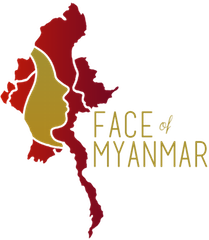Meet Kalima. She was born and raised in Hlaine, the lively Muslim Quarter in Mawlamyine, the capital city of Mon State. Her Thanaka has a slightly yellow coloring because she mixes it with turmeric. Kalima's distinct pattern reflects her Indian Muslim decent and the influence her ethnic background has in her use of Thanaka.
Thanaka has long been part of Kalima's daily ritual. She has applied it 2 times every day since she was a young girl.
Myanmar’s Indian population exploded during 19th century British colonization. At this time, many Indian workers were relocated into new colonial city centers to run government posts and provide a controlled labor force. The Indian population was particularly influential in Mawlaymine, which was the first capital city of British Burma. Though many Indians fled during World War II and later were deported after the military junta took over the Burmese government in 1962, there are still many communities that remain throughout the country.
Kalima, like many other Muslim women we’ve met, mixes her Thanaka with turmeric and applies to her entire face with two traditional Indian bindis, the red dot typically made of turmeric and vermillion powder, on her forehead. Both the bindis and the turmeric added to her Thanaka paste are markers of marriage in Indian culture.
Kalima’s chosen pattern illustrates the added diversity this settlement brought into the country and the ways in which immigrant cultures combine their own traditions with the distinctly Bamar practice of Thanaka.


